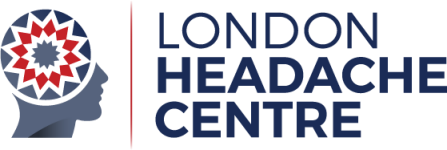Non-pharmacological treatments for acute migraine attacks
Seek out a quiet, cool, dark environment that reduces external stimuli, and prevents the associated sensitivities of the migraine attack (light, noise, smell, movement) from worsening your headache. In such an environment, you may find that you can sleep, and this may be your most effective therapy. Children in particular often find that a short period of sleep is sufficient to abolish their migraine altogether.
Physical treatments such as massage, heat packs, icepacks, menthol forehead strips, and so on, may be helpful in some cases. Some people find pulling their hair firmly tight reduces pain.
Relaxation exercises and other behavioural interventions such as biofeedback have been shown to be helpful in reducing migraine pain, particularly in children and adolescents.
Drug treatments for acute migraine attacks
There are certain principles that apply whichever medicine you use:
- Treat your attacks early, when the pain is still mild. There is good evidence – particularly for the triptans – that treating attacks when the pain is mild is more effective than waiting until it has become severe.
- Use effective doses. Treatments should be trialled up to the maximum tolerated dose before being abandoned as ineffective.
- Treat the other symptoms of migraine, not just the pain. There are effective treatments for nausea, in particular.
- Choose an appropriate route of delivery. Various acute medications can be given by nasal spray, or via a suppository.
Where to start?
Simple analgesics are often effective. Options include paracetamol 1 g, aspirin 900 mg, or ibuprofen 400-800 mg. If nausea is a feature, then domperidone 10-20 mg can be taken as well. These treatments should be taken as soon as you know that it is going to be a migraine, preferably while the pain is still mild or moderate. If you experience an aura prior to the headache phase of your migraine, wait until the beginning of the headache phase to take medication; none of the currently available acute drug treatments for migraine affect aura.
Even when used optimally (in terms of dose, timing, route of delivery, and so on), simple analgesics do not always provide adequate pain relief. Some people cannot tolerate simple painkillers because of side effects or because they have other problems such as asthma, stomach ulcers, or kidney impairment. Some patients simply do not respond to them. At this stage, if at all possible avoid taking codeine-paracetamol combination medications, which carry the risk of causing medication overuse headache and addiction.
Triptans
Triptans are specifically licensed for the treatment of acute migraine attacks. Sumatriptan (Imigran), the first commercially-available formulation, was introduced in the late 1980s and early 1990s, and has been joined on the market by six other drugs (almotriptan (Almogran), eletriptan (Relpax), frovatriptan (MIgard), naratriptan (Naramig), rizatriptan (Maxalt), zolmitriptan (Zomig), available in a variety of doses and delivery methods. As with other painkillers, you should take your triptan as soon as you know that you are having a migraine, while the pain is still mild or moderate, and before you develop allodynia (painful skin hypersensivity), at which stage the triptans are much less likely to work well.
The choice of triptans may be influenced by a number of factors. Most triptans given in tablet form or via nasal spray cause a headache response (i.e. reduction of a moderate or severe headache to a mild headache or no headache at all) at two hours in about two-thirds of patients; about one-third will be rendered headache-free. The only significantly more effective formulation is the intramuscular injectable sumatriptan. Patients with significant nausea may find it easier to use the sumatriptan or zolmitriptan nasal sprays, or the sublingual rizatriptan or zolmitriptan ‘melts’. Triptans can and should be given in combination with domperidone.
In terms of side effects, nausea and chest tightness are common, though rarely dose-limiting. Triptans with longer half-lives, particularly frovatriptan 2.5 mg, may be helpful if attacks have a tendency to recur. The combination of sumatriptan and naproxen has also been shown to be associated with a lower rate of headache recurrence.
There are a few patients in whom the use of triptans is inadvisable or contraindicated. These include patients with severe ischaemic heart disease, peripheral arterial disease, uncontrolled hypertension, and severe Reynaud’s phenomenon. If these patients do not respond to simple analgesia, then (and only then) there may be a case for the use of opiates. This should be a decision made and monitored in a specialist headache clinic, however.
<- Back to Patients page.
